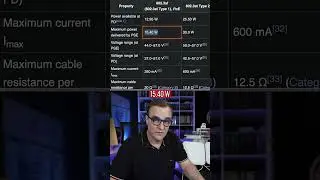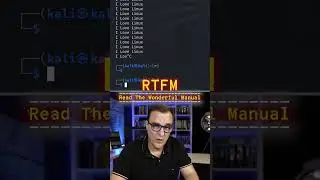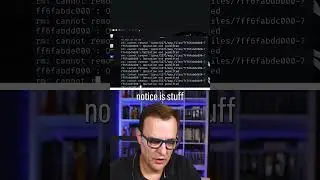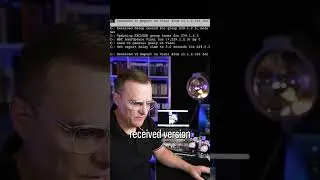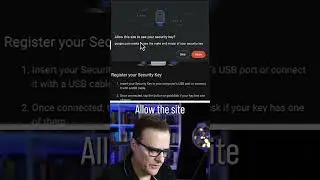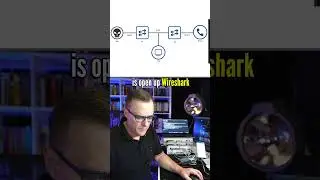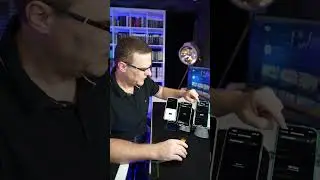Cisco CCNA Packet Tracer Ultimate labs: GRE Tunneling. Answers Part 2
Packet Tracer file (PT Version 7.1) : https://goo.gl/fZ72Sa
Get the Packet Tracer course for only $10 by clicking here: https://goo.gl/vikgKN
Get my ICND1 and ICND2 courses for $10 here: https://goo.gl/XR1xm9 (you will get ICND2 as a free bonus when you buy the ICND1 course).
For lots more content, visit http://www.davidbombal.com - learn about GNS3, CCNA, Packet Tracer, Python, Ansible and much, much more.
#CCNA #PacketTracer #CCENT
You need to know GRE for the CCNA exam.
Generic Routing Encapsulation (GRE) is a tunneling protocol developed by Cisco Systems that can encapsulate a wide variety of network layer protocols inside virtual point-to-point links over an Internet Protocol network.
Transcription:
In this lab you need to configure a GRE tunnel.
Now we need to configure a GRE tunnel between Customer Router 1 and 2 so that the PCs can ping each other.
So on Customer Router 1, we're going to create a tunnel interface. We'll use 0 as the tunnel number. IP address that we'll use is 10.1.3.1/24 mask. In the real world, you probably want to use a /30 mask to conserve IP addresses. But we don't need to worry about that for the lab.
We then need to specify a tunnel source. In this case the tunnel source will be gigabit 0/0/1
Now you don't have to use the local interface. As the source, you could specify the local router’s IP address if you want to but I've used the interfaces in this example.
The tunnel destination will be the router on the other side which is Router 2.
Now in this a lab, the routers are using DHCP addresses on the internet facing interfaces.
In the real world you're going to want to use static IP addresses because if these addresses change, your tunnels will break. But that's okay for this lab.
The tunnel interface has come up because the local router has IP reachability to the destination. That doesn't mean that the tunnel is going to work because we need to still configure the other side. So the tunnel is up now.
On Router 2 interface tunnel 0
IP address to use is 10.1.3.2/24 mask
Tunnel source is going to be the local interface gigabit 0/0/1
Tunnel destination is going to be Customer Router 1 with IP address 8.8.10.2
Tunnel has come up on the side.
So can we ping 10.1.3.1? In other words, can we ping from the local tunnel interface to the remote tunnel interface? It took it a while but that's working now.
So ping 10.1.3.2 we can ping from this tunnel interface to this tunnel interface and back again. But notice that the call routers don't know about that network. So show IP route, this router only knows about Network 8, it doesn't know about Network 10. The traffic is being encapsulated on the Internet.
So what we've done thus far is configure a GRE tunnel. The two routers can ping each other but we now need to advertise these networks via EIGRP, otherwise the routers will not know about the internal networks behind the other router.
As an example, Router 2 knows about Network 10.1.2
This network 10.1.3.0 the tunnel subnet but it doesn't know about network 10.1.1.0
Customer Router 1 also knows about 10.1.3.0
It knows about 10.1.1.0 but it doesn't know about network 10.1.2.0
So we need to configure EIGRP autonomous system 100.
So I’ll do that and enable EIGRP on Network 10 and disable automatic summarization.
We were told to use EIGRP as the routing protocol on Router 2.
Do something similar router eigrp 100
network 10
no auto summary
and as you can see there, a neighbor relationship was established.
We've got a new adjacency.
So on Router 2
show ip eigrp neighbors
We've got a neighbor relationship to Customer Router 1 through the tunnel.
show ip route
this router has now learned about network 10.1.1.0
So it should be able to ping 10.1.1 which it can.
So Router 2 can ping this IP address through the tunnel. Notice the difference when I do a trace.
So traced to 10.1.1.1
we don't see the Internet routers. It looks like these two routers are directly connected to each other which they logically are through the GRE tunnel.....
Watch video Cisco CCNA Packet Tracer Ultimate labs: GRE Tunneling. Answers Part 2 online, duration hours minute second in high quality that is uploaded to the channel David Bombal 19 February 2018. Share the link to the video on social media so that your subscribers and friends will also watch this video. This video clip has been viewed 4,397 times and liked it 50 visitors.








